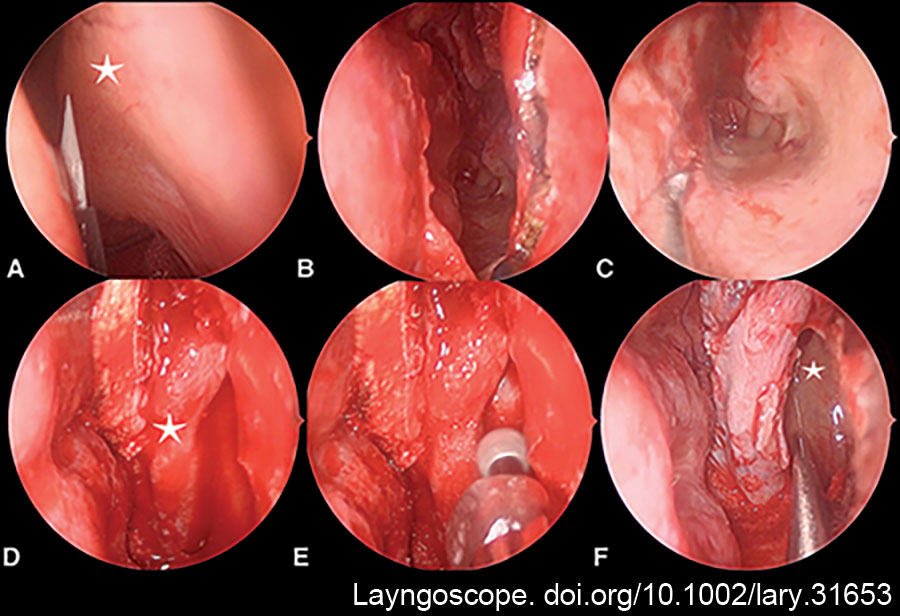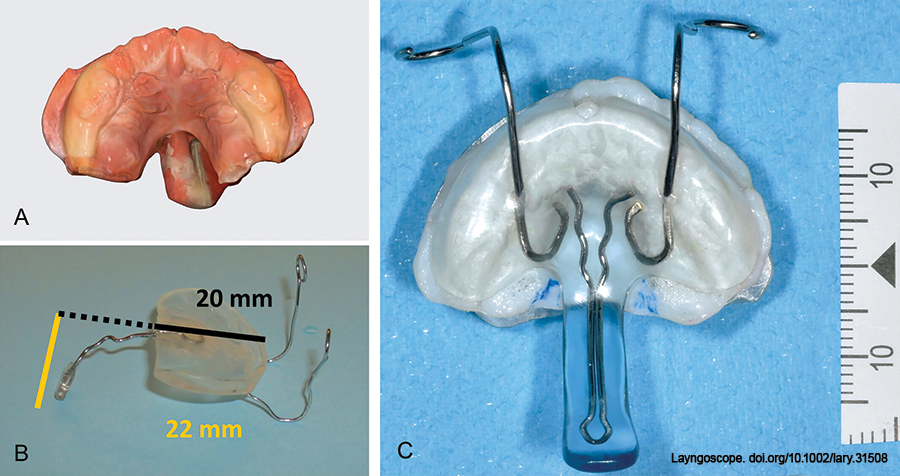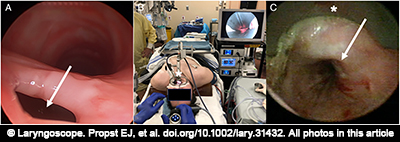This study describes a prelacrimal–transpterygoid/maxillary approach that offers direct access to this region with a 0° endoscope.


This study describes a prelacrimal–transpterygoid/maxillary approach that offers direct access to this region with a 0° endoscope.

This article describes an updated and straightforward technique for in-office retrograde placement of the voice prosthesis in patients with challenging TEP tracts.
This article introduces a new endoscopic technique for anterior LTR using costal rib cartilage grafting in a two-year-old patient with acquired grade III subglottic stenosis.

This study describes the successful use of a hybrid resection and laryngotracheoplasty procedure that maximizes airway luminal patency in adults with successful decannulation.

Pierre Robin sequence (PRS) has an estimated prevalence of one in 10,000 births and is characterized by micrognathia and glossoptosis leading to upper airway compromise. As airway obstruction can be life-threatening, immediate recognition and treatment are vital.

Onyx is a safe and effective embolic agent used in the treatment paradigm of jna. This study offers a tandem approach that combines tae with dpe and onyx to limit blood loss and facilitate safe resection.

A safe technique for transnasal endoscopic drainage of upper parapharyngeal abscesses.

This protocol describes the method for creating 3D-printed trachea models for use in high-fidelity simulation-based training and advanced surgical planning for pediatric patients undergoing slide tracheoplasty.

This study is about a patient for whom suspension microesophagoscopy was performed and describes how this approach allowed for improved management.

Currently, Bilateral Vocal Fold Immobility (BVCP) is often treated by transoral CO2 laser-assisted transverse cordotomy. Still, this procedure can lead to subsequent scarring at the wound bed, resulting in re-narrowing of the airway and poor voice. Transverse cordotomy with thyroarytenoid myectomy may promote faster healing and may limit scarring and restenosis.
